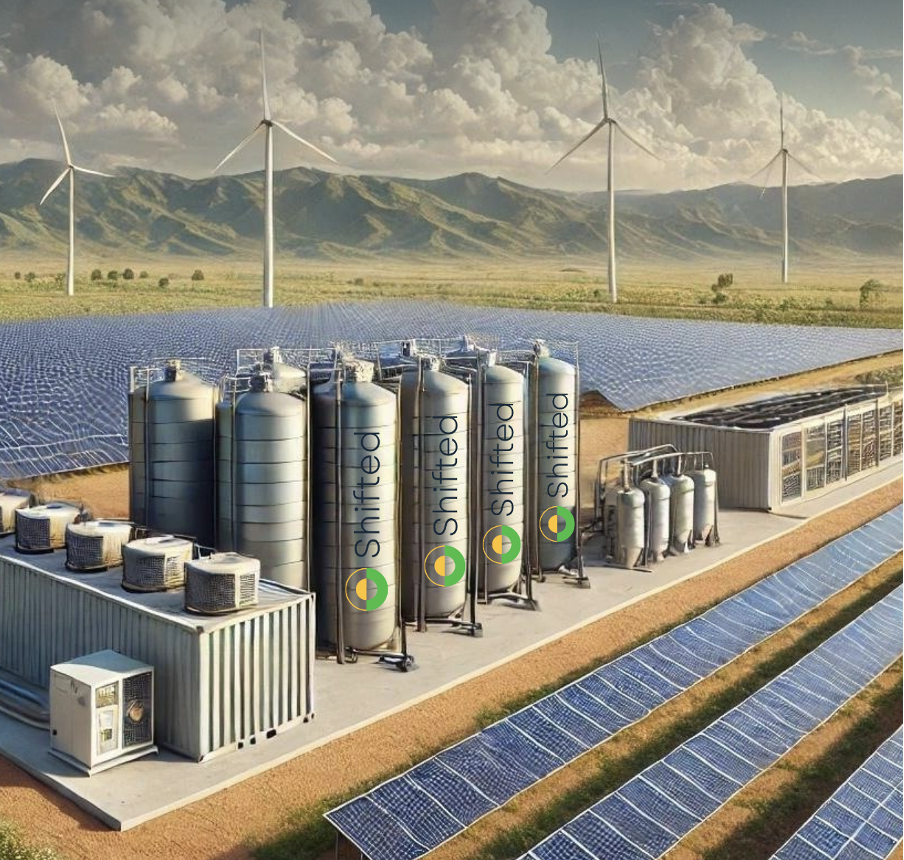When Spain and Portugal lost all power in April 2025, there was much discussion about whether heavy reliance on renewable energy was to blame. Renewable curtailment is when more solar or wind energy is being produced than is needed. It is this intermittent nature of renewables that creates challenges for the electricity grid, which needs a controlled system frequency of around 50 Hz and constant balancing to ensure it is not overloaded or under powered.
Balancing has always been required by the grid, and this is traditionally achieved using spinning gas turbines to maintain inertia. Energy is stored in a large rotating mass and acts like a shock absorber. Inertia operates for a few seconds to allow the power grid to ride though short duration faults making it robust against disturbances.
Improved battery technology is often considered the solution to renewable curtailment, but early-stage climate tech company Shifted offers an alternative approach that will increase the resilience of the grid.
Case-study: Shifted
Simon Belka is the CEO of Shifted, the company uses a pumped hydro system to store excess energy in compressed air overcoming the issue of curtailment. It also offers the inertia that is critical to stablise the grid. Simon explains how Shifted has researched the market to ensure the solution is attractive to end users and overcomes industry challenges.
How did you determine the market need?
Prior to launching our venture, we conducted over 200 discovery interviews with customers such as renewable energy developers, producers and aggregators, and also with experts in the industry to make sure we understood the problem and the people who needed that problem solved.
This included:
- Professionals who are servicing the grid directly by managing storage assets for grid stability,
- Renewable energy project developers who are facing challenges deploying new projects due to high curtailment and/or are expecting reduced revenues caused by curtailment.
Through those discussions, we identified 3 potential focus points where our solution could offer value:
- Wind/Solar farm operators – to increase the return on investment by storing the electricity that would otherwise be liable for containment due to grid congestion or demand/supply imbalance.
- Electro-intensive industries – to leverage arbitrage (ie: store electricity when it is cheap and use it when it is expensive thus reducing their electricity bill) and load shedding with aggregators
- Aggregators and flexibility service providers – grid operators play a role in balancing and ancillary service markets to ensure demand matches supply and to guarantee system security.

In Europe, grid operators are divided into transmission system operator (TSO) and distribution system operator (DSO). Our solution could enable better balance demand and supply by adding flexibility on the demand side or supply side.
We have secured six letters of intent with RE producers and aggregators servicing the grid. Due to the exponential growth of variable renewable sources of electricity, these needs are going to grow, and likely grow fast.
What is your business model?
Our plan is a combination of hardware and service contracts.
Our 1-20 MW systems is ideal for medium-sized renewable energy producers and operators and electro-intensive industries.
In the long term, we will introduce our 50-200+ MW systems, designed for grid-scale applications. This will open up new opportunities with Transmission System Operators (TSOs), Distribution System Operators (DSOs), and aggregators, expanding our reach into the utility and large-scale energy management markets.
For service contracts: we will offer performance-based service agreements that guarantee certain levels of efficiency and reliability.
Does something need to change to facilitate the adoption of your technology?
Yes, there are a number of measures that would accelerate adoption.
- Regulators must classify long-duration storage as a grid asset – this would eliminate double-taxation on charging/discharging which still happens in some countries;
- Grid operators must expand ancillary-service markets – this would reward capacity, ramp-rate and inertia contributions.
- Government to promote alternatives to battery storage especially for long duration energy storage (LDES) through more open regulation – there is a strong lobby to position Li-ion BESS as the silver bullet of storage, but we cannot ignore their environmental impact on water and land, dependence on critical materials and countries, poor recyclability, and fire hazard.


